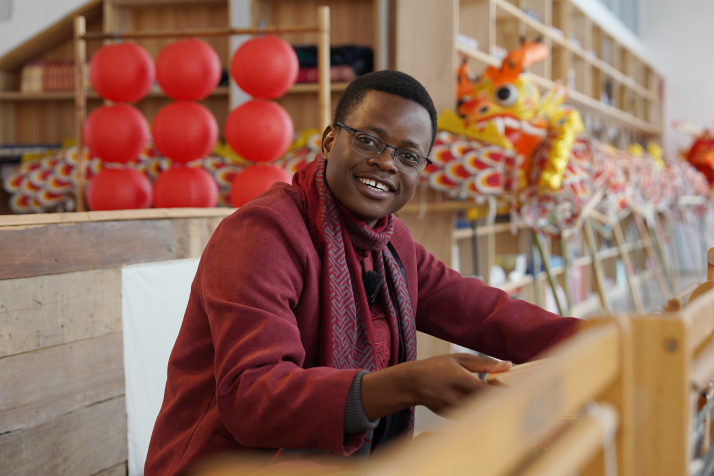| Lifestyle |
| Families, folklore and good fortune | |
|
|
 Tungamirai Eric Mupona during the Spring Festival in Hangzhou, Zhejiang Province, in January 2024
The Spring Festival is the largest and most important festival in China and among Chinese communities worldwide. Having experienced the festival for six years in China, I have developed a deep appreciation for its cultural, social and economic significance. The celebration embodies essential themes such as family reunion, wishing for good fortune and wellbeing, social harmony, and preserving cultural heritage. In recognition of its importance, the United Nations Educational, Scientific and Cultural Organization (UNESCO) added the Spring Festival to the Representative List of the Intangible Cultural Heritage of Humanity in December 2024. Traditionally, Spring Festival activities begin with the Laba Festival on the eighth day of the 12th lunar month, which marks the beginning of Chinese New Year celebrations. They conclude with the Yuanxiao or Lantern Festival on the 15th day of the first lunar month, which marks the end of the celebrations. I had the opportunity to participate in an activity where we prepared Laba porridge, a mixture of various grains and beans symbolizing abundance and blessing, to distribute to senior residents in a local community and to travelers at a nearby subway station. This experience provided me with deeper insights into the Laba Festival and its cultural importance. One of the local volunteers told me that the Laba Festival has its roots in ancient traditions, when it was a time for communities to express gratitude to the gods and ancestors for the year's harvest, bid farewell to the old year, and welcome the new lunisolar year together. Nowadays, red lanterns are easily recognized as one of the symbols of Chinese culture worldwide. While you might see them throughout the year, they are particularly prominent in China during the Yuanxiao Festival at the end of the Spring Festival period. During this festival, Chinese people gather to eat sweet dumplings made of glutinous rice flour, hang colorful lanterns, play riddle games, watch lion dances and participate in other folk activities. Between the Laba Festival and the Yuanxiao Festival, there are several other important festivals. One is the Little New Year, or Xiaonian, also known as the Festival of the Kitchen God, during which Chinese people pray for peace in the coming year and clean their homes, symbolizing the end of the old and the beginning of the new. Another is Chinese New Year's Eve, a time for family dinners and setting off firecrackers. The eight-day Spring Festival public holiday itself features an even wider range of traditional and modern celebrations. I have spent most of my Chinese New Year's Eves at the homes of my Chinese friends, immersing myself in the festive atmosphere. A standout feature is the Spring Festival couplets and calligraphy of the Chinese character fu, meaning "fortune" or "blessing," which are pasted on doors. In addition to enjoying the New Year's Eve dinner, people often stay up late watching the annual Spring Festival Gala on China Central Television and welcoming the New Year together. My Spring Festival experiences in China have profoundly shaped my understanding of the pivotal role traditional festivals play in fostering social cohesion and cultural identity. It's been a privilege to witness firsthand the joy and anticipation surrounding the festivities: children eagerly donning new clothes, families gathering for joyous reunions and communities coming together to celebrate. All this underscores the deep-rooted significance of these traditions. The Spring Festival, with its intricate tapestry of folk customs, ancestral reverence and lively celebrations, exemplifies how cultural heritage can enrich lives and strengthen social bonds. BR The author is a Zimbabwean Ph.D. Student of International Affairs and Global Governance at Zhejiang University. This article was first published in ChinAfrica magazine Copyedited by G.P. Wilson Comments to luyan@cicgamericas.com |
|
||||||||||||||||||||||||||||||
|